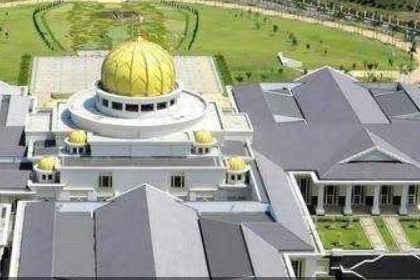The State of Kuwait, a small yet strategically significant country located at the head of the Persian Gulf, has a rich and complex history shaped by its monarchy. The Kuwaiti monarchy, with roots dating back to the early 18th century, has played a central role in the nation’s development and its political landscape. This article provides a comprehensive historical overview of the Kuwaiti monarchy, tracing its evolution, challenges, and impact on the country’s identity.
Early Beginnings of Kuwaiti Monarchy
The origins of the Kuwaiti monarchy can be traced back to the Al-Sabah family, believed to have settled in the region in the early 1700s. The Al-Sabah family, originally from the Nejd region of present-day Saudi Arabia, established themselves as leaders among the local tribes and began to consolidate power. In 1716, Sheikh Sabah I bin Jaber became Kuwait’s first ruler, marking the Al-Sabah dynasty’s beginning.
Initially, the Sheikh’s authority was based on a tribal system where loyalty and kinship played crucial roles. The leadership was not absolute; the consensus of the tribes and local notables significantly influenced it. This early form of governance laid the groundwork for a more structured political system that would develop over the centuries.
Consolidation of Power
Throughout the 18th century, the Al-Sabah family faced various challenges, including rival tribes and external threats from the Ottoman Empire and Persia. Despite these challenges, they consolidated power through strategic alliances and military strength. By the late 19th century, Kuwait had established itself as a significant regional trading hub, benefiting from its location and the burgeoning pearl fishing industry.
In 1896, Sheikh Mubarak Al-Sabah, known as “Mubarak the Great,” ascended to the throne. His reign marked a turning point in Kuwaiti history as he sought to modernize the country and strengthen its position against external threats. Sheikh Mubarak established diplomatic relations with Britain, influencing Kuwait’s foreign policy for decades. In 1899, in a bid to protect Kuwait from Ottoman encroachment, he signed a treaty with Britain that effectively made Kuwait a protectorate.
The British Protectorate
The British protectorate lasted for much of the 20th century, bringing significant changes to Kuwait. Under British oversight, Kuwait experienced economic growth due to the discovery of oil in the 1930s. This newfound wealth transformed the nation, allowing modern infrastructure, schools, and hospitals to be constructed. However, it also created a reliance on foreign powers and the oil economy, which would have lasting implications.
Kuwait’s strategic location made it a focal point for military operations during World War II. The war led to a temporary decline in oil production and economic hardship, but post-war recovery was swift. By the 1950s, Kuwait was poised for significant political change as nationalist movements gained momentum across the Arab world.
The Rise of Nationalism and Modern Governance
In 1950, Sheikh Ahmed Al-Jaber Al-Sabah, who succeeded Sheikh Mubarak, faced growing demands for political reform. The rise of nationalism in the region led to calls for a more representative government. In 1961, Kuwait gained independence from Britain, and the new constitution established a parliamentary system, although the monarchy retained considerable power.
The first elections were held in 1963, marking a significant step towards democratization. However, tensions between the ruling family and the elected parliament emerged, leading to a delicate balance of power. The monarchy’s ability to navigate these political challenges was tested during the oil boom of the 1970s, which brought unprecedented wealth and development to the country.
The Iraqi Invasion and Its Aftermath
The stability of the Kuwaiti monarchy faced a severe test during the late 20th century. In August 1990, Iraq, led by President Saddam Hussein, invaded Kuwait, claiming it as its 19th province. The invasion shocked the world and led to a swift international response, with a coalition of countries launching Operation Desert Storm to liberate Kuwait in early 1991.
The invasion profoundly impacted the Kuwaiti monarchy and the nation as a whole. The ruling family was forced into exile, and the state infrastructure was severely damaged during the conflict. However, the swift liberation of Kuwait reinforced the monarchy’s legitimacy and strengthened the national identity. Sheikh Jaber Al-Ahmad Al-Sabah returned to Kuwait after the liberation and worked to rebuild the nation and restore stability.
Post-Invasion Era and Political Challenges
In the years following the liberation, Kuwait faced numerous challenges, including the need for reconstruction, societal changes, and political tensions. The Kuwaiti monarchy sought to balance modernization with traditional values. Economic reforms were implemented to diversify the economy and reduce reliance on oil, while social changes aimed to empower women and promote education.
However, political challenges persisted. The parliament became increasingly assertive, demanding greater accountability and transparency from the ruling family. The monarchy faced criticism over corruption, nepotism, and the slow pace of reform. The political landscape became more polarized, prompting protests and calls for greater democratic reforms.
In 2006, Sheikh Sabah Al-Ahmad Al-Jaber Al-Sabah ascended to the throne, becoming the fourth ruler of Kuwait since independence. His reign has been characterized by efforts to address social and economic issues while navigating the complex political landscape. Sheikh Sabah emphasized the importance of dialogue between the government and parliament and sought to foster a sense of national unity.
The Role of Women in Kuwaiti Society
One of the notable developments in recent years has been the increasing role of women in Kuwaiti society. The Kuwaiti monarchy has recognized the importance of women’s participation in various sectors, leading to significant advancements in women’s rights. In 2005, Kuwaiti women gained the right to vote and run for office, marking a historic milestone.
Women now occupy key positions in government, business, and civil society. The monarchy’s support for women’s empowerment has contributed to a more dynamic and diverse society, although challenges remain in achieving full gender equality.
Conclusion
The Kuwaiti monarchy has a rich and complex history, marked by the evolution of governance, the challenges of modernization, and the resilience of its people. From its early beginnings in the 18th century to its current role as a constitutional monarchy, the Al-Sabah family has navigated a tumultuous political landscape, balancing tradition and modernity.
As Kuwait continues to face new challenges in the 21st century, including regional tensions, economic diversification, and social change, the monarchy’s ability to adapt and respond to the needs of its citizens will be crucial. The legacy of the Kuwaiti monarchy is not only reflected in its historical achievements but also in its ongoing commitment to its people’s welfare and the nation’s stability.


